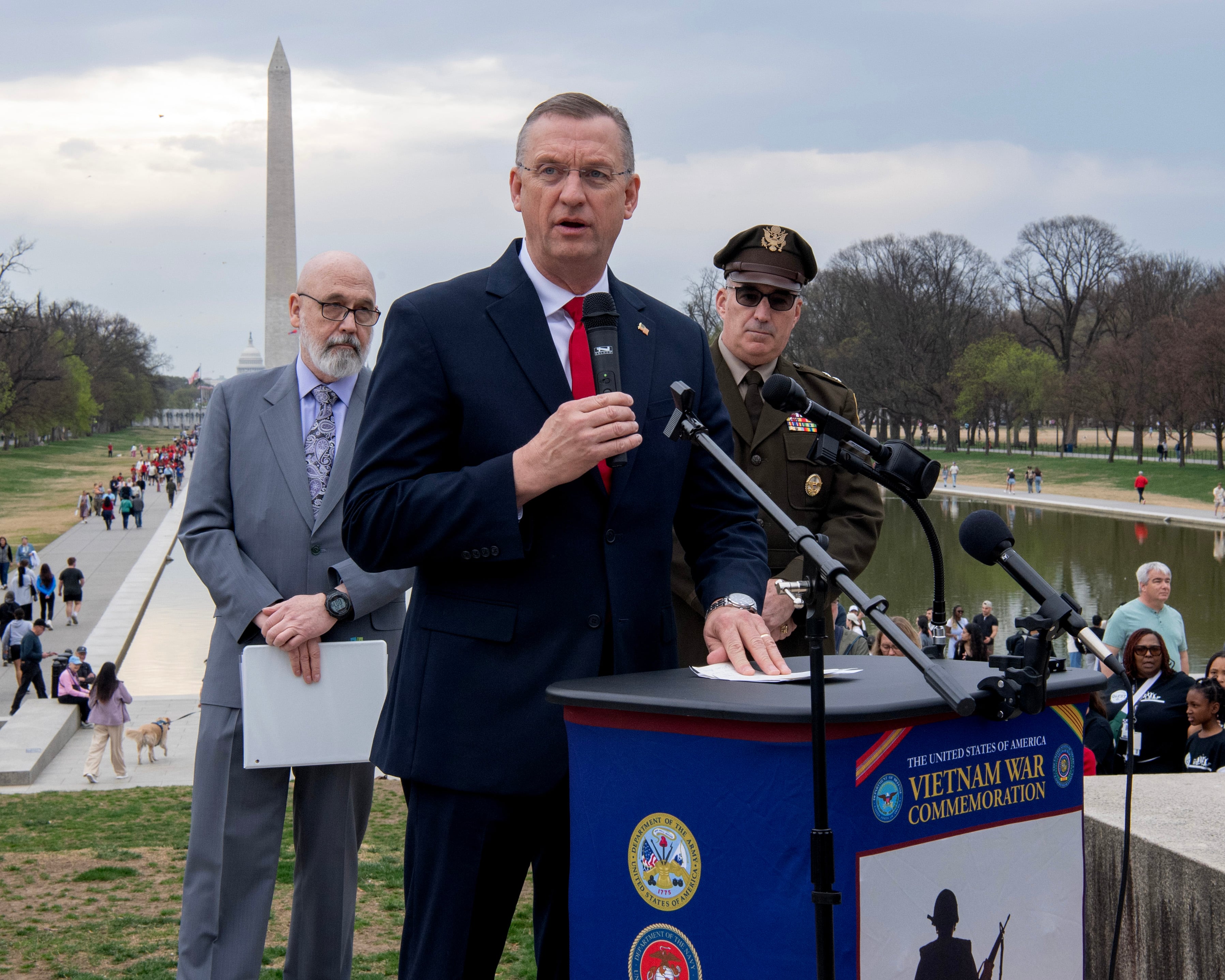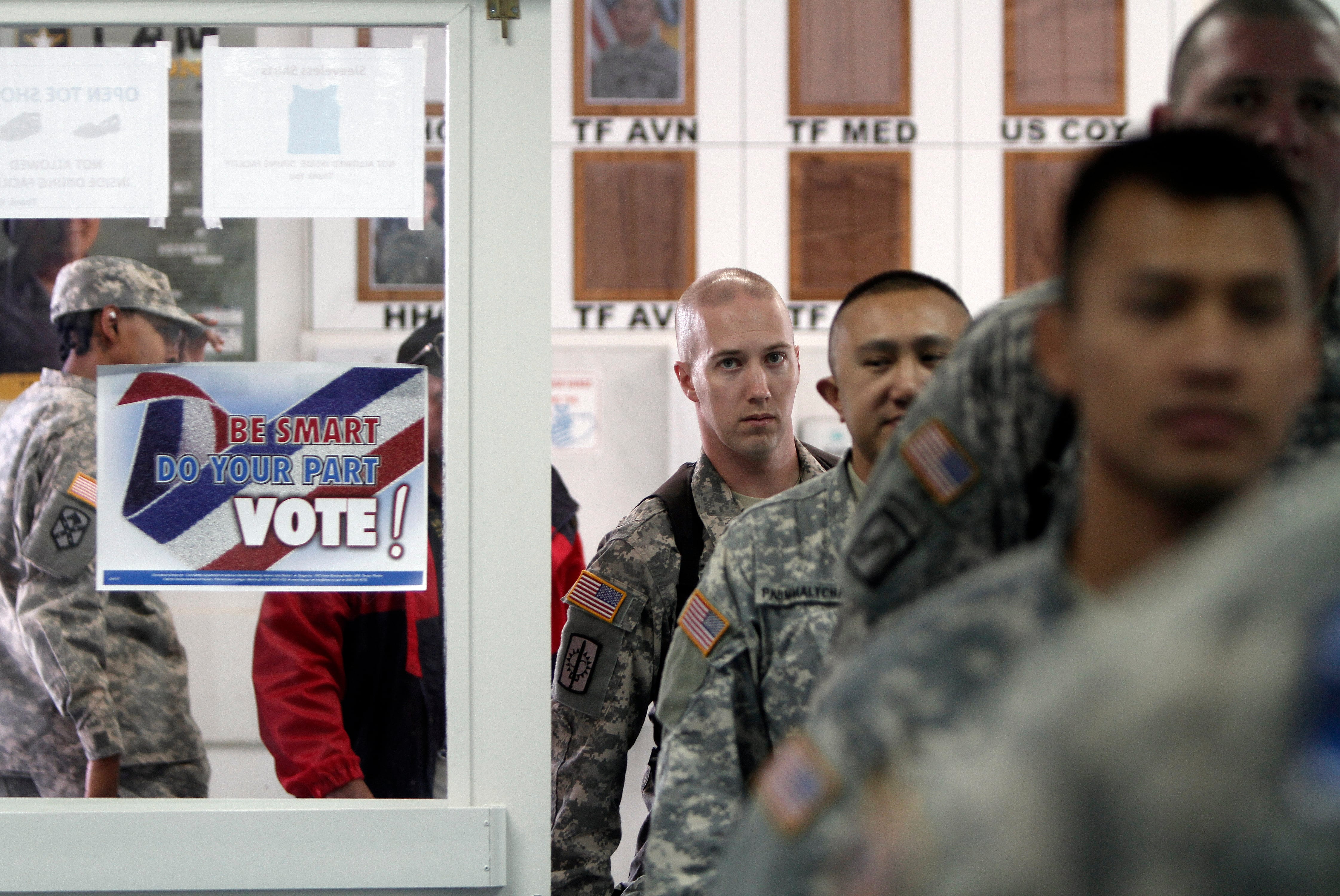Instructors and trainees didn't think much of it when two SEALs showed up at the pool on a Friday afternoon in April, toting a sand bag and asking to use a side lane for to do some conditioning.
It also didn't seem odd about an hour later when trainees went to collect equipment and saw the sandbag beside the pool, but nobody in the water — they thought.
Fifteen minutes later, a group discovered Special Operators 1st Class (SEAL) Brett Marihugh, 34, and Seth Lewis, 32, at the bottom of the pool at the Naval Special Warfare Group 2 Combat Swimmer Training Facility at Joint Expeditionary Base Little Creek-Fort Story, Virginia.
Virginia medical examiners ruled their drowningsdeaths accidental, by drowning, but a command investigation reveals evidence of a dangerous, prohibited contestgame that cost them their lives.
NSWG-2 found that the two died in the line of duty and not due to misconduct, according to a report obtained by Navy Times via a Freedom of Information Act request.
The most likely cause of death was breath-holding, the investigator wrote, but a determination couldn't be made because there were no eyewitnesses or and no video. However, in his identical lettersendorsements in the two line-of-duty investigations, the head of the Naval Special Warfare Center cited breath-holding but offered his sympathy.
"SO1 Lewis' death appears to have resulted from his desire to become a better operator," he wrote. "Although he violated policy by engaging in the dangerous activity of breath-holding, SO1 Lewis was doing so in an effort to become a better combat swimmer. His dedication and commitment to his craft is both honorable and noteworthy, and should not be forgotten."
The investigations found that Marihugh and Lewis, though they violated a written instruction and a verbal warning from an instructor, but that neither order was punitive. The report concluded and therefore that their "careless and inappropriate" behavior didn't rise to the level of misconduct.
However, Word of their untimely deaths spread throughout the Navy, up to Naval Safety Center boss Rear Adm. Christopher Murray.
"We had two gentleman in the pool in Little Creek who decided to see who could hold their breath longer," he told an audience in a briefing at the annual Tailhook Reunion in September. "They both lost, they both died."
A spokeswoman for Murray clarified his position.
"The sole focus of his remarks was to remind sailors that regardless how repetitive or dangerous our daily jobs and tasks appear to be, there is risk at every turn, and the Navy must remain vigilant in avoiding the tragic loss of life," Maggie Menzies said.
Pushing too far
Word also spread to the veteran community.
"I remember this happening," former SO1 (SEAL) Joel Lambert, a nine-year operator and former Basic Underwater Demolition/SEAL training instructor told Navy Times.
"These were two warriors pushing themselves to be better, to improve themselves to better bring the fight to our nation's enemies," he said. "This is what the SEAL teams are like, and more accurately, what SEALs are like. We constantly compete, constantly push each other to be better, by trying not to let our brothers beat us in anything if we can help it."
Marihugh and Lewis showed up at the pool around 1:45 p.m. on April 24, according to witnesses, and Marihugh was carrying a weighted bag.
"I thought to myself, I wonder what kind of mission they're training for?" said a retired Master Chief Special Warfare Boat Operator, who was leading a class at the time.
They started with drills, swimming followed by pushups, sandbag lunges and planks by the pool's edgealongside the pool. The sandbag poolside on the side of the pool caught the eye of the facility manager, because it wasn't a normal piece of training equipment.
"Don't do any breath-holding, boys," he told them, according to his statement, and they acknowledged.
Per instruction, breath-holding outside of command-organized sessions is strictly prohibited. The hazards are too great. It's allowed under certain circumstances, but only in a group setting and only when a trainer is observing.
Marihugh and Lewis were doing what's known as an individual conditioning swim, which is allowed while lifeguards are on duty during a prescribed time each day. After hours, they need a buddy.
The facility manager told the retired master chief to come and get him if the guys brought the sandbag in the pool, but they never did. Sandbags are used to weigh swimmers down in the pool for breath-holding or exercises on the pool floor.
After the class was over, Marihugh and Lewis were left alone. At 2:45 p.m., a group of trainees came in to clean up for the weekend but didn't notice anyone in the pool.
At 3:00 p.m., a group of three petty officers arrived to continue putting equipment away. Standing together at one corner of the pool, they noticed the men at the bottom.
"At first we looked at each other and thought the men were just doing breath holds because Seth Lewis had a watch on and it appeared that he was looking at it," a petty officer said in his statement.
He noticed Lewis' arm twitch, he said, which reminded him that twitching is sometimesa symptom of having lost consciousness. Marihugh was on his back.
The men splashed the water to get their attention, to no response. They leaped leapt in and in and but when there was so response, they jumped in and hauled them out.
The men were taken to two Norfolk-area hospitals. Lewis was pronounced dead on arrival, and Marihugh passed away the following day.
'The mentality'
In the wake of their deaths, NSWG-2 ordered tighter restrictions on the CSTF pool.
"To be clear ... individual or small group lap swims or training are NOT authorized to be conducted in the CSTF until further notice," NSWG-2's CO wrote in a May 18 memo. "BREATH HOLDING will NOT be conducted under any situation."
The subsequent investigation provided two recommendations for the facility: The first was redacted. The second was to post "no breath-holding" signs at all NSW pools.
Conditioning swims were banned following the deaths, but have since been permitted allowed again, an NSWG-2 spokeswoman told Navy Times.
"Our condolences remain with SO1 Brett Marihugh and SO1 Seth Lewis's family, friends, and teammates," Lt. j.g. Jacqui Maxwell said. "Safety of our service members remains our top priority, and corrective safety measures were immediately put in place to prevent this type of incident from happening again."
Marihugh and Lewis' deaths fall into a special operations gray grey area. Breath-holding is an accepted conditioning tactic for combat swimmers, according to instruction. However, it's not allowed during individual swims. To keep those conditioning sessions safe, operators are only allowed to use the pools outside of class when there's a lifeguard on duty, or they have another operator in the pool with them.
Those safeguards, however, don't always account for their highly valued willingness to take risks.
"Iron sharpens iron, and while this is a tragic end, this is consistent with the mentality of the teams," Lambert said. "You're not going to change it, and shouldn't try, because this is the mentality of the men that we seek:" competitive, always pushing, always driving to be better."
Even as he explained the carelessness of their actions in his endorsement of the investigation, NSWC's boss echoed Lambert, commending the two for pushing themselves to be better, even at the expense of their lives.
Meghann Myers is the Pentagon bureau chief at Military Times. She covers operations, policy, personnel, leadership and other issues affecting service members.




